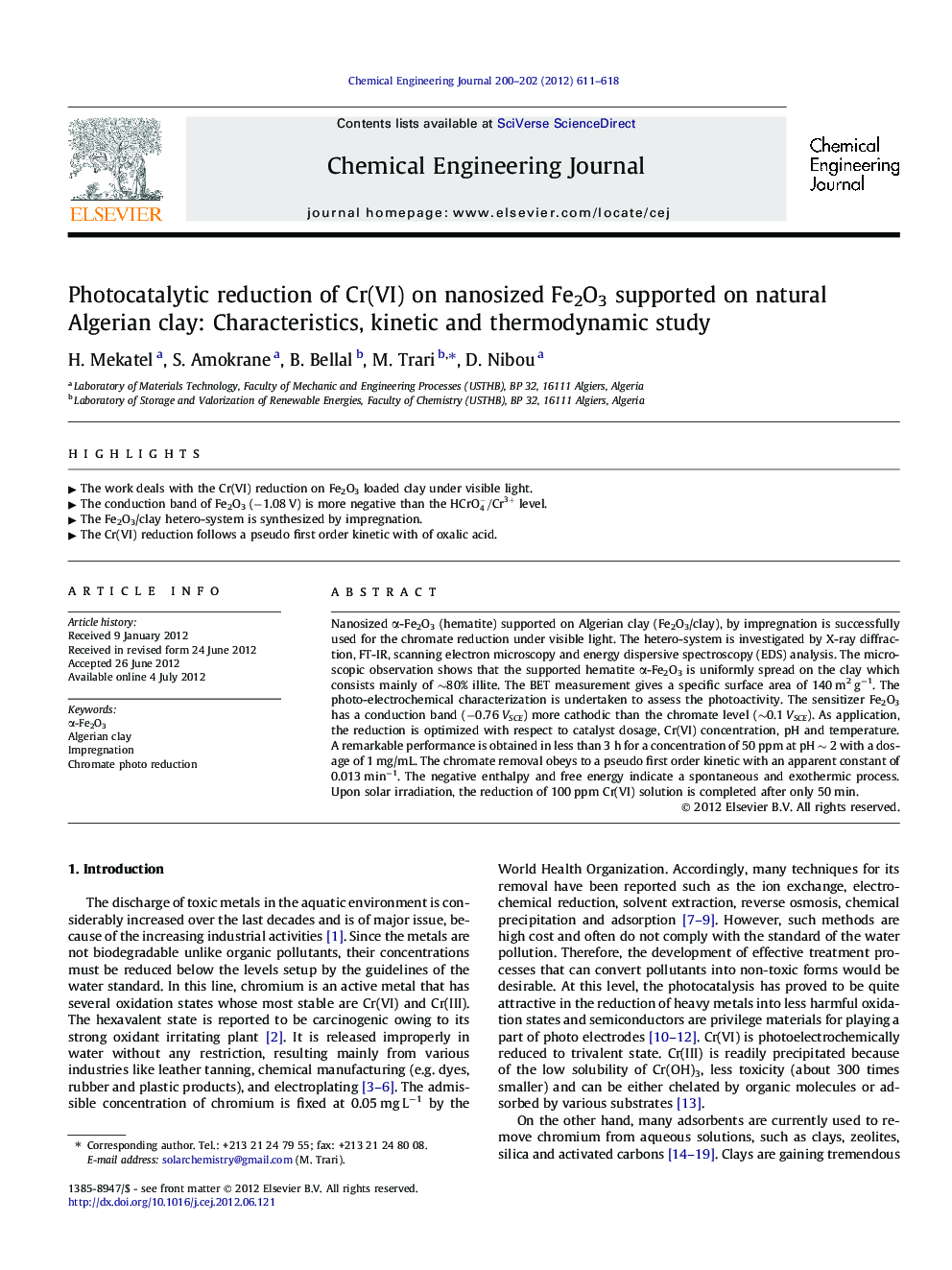| Article ID | Journal | Published Year | Pages | File Type |
|---|---|---|---|---|
| 149578 | Chemical Engineering Journal | 2012 | 8 Pages |
Nanosized α-Fe2O3 (hematite) supported on Algerian clay (Fe2O3/clay), by impregnation is successfully used for the chromate reduction under visible light. The hetero-system is investigated by X-ray diffraction, FT-IR, scanning electron microscopy and energy dispersive spectroscopy (EDS) analysis. The microscopic observation shows that the supported hematite α-Fe2O3 is uniformly spread on the clay which consists mainly of ∼80% illite. The BET measurement gives a specific surface area of 140 m2 g−1. The photo-electrochemical characterization is undertaken to assess the photoactivity. The sensitizer Fe2O3 has a conduction band (−0.76 VSCE) more cathodic than the chromate level (∼0.1 VSCE). As application, the reduction is optimized with respect to catalyst dosage, Cr(VI) concentration, pH and temperature. A remarkable performance is obtained in less than 3 h for a concentration of 50 ppm at pH ∼ 2 with a dosage of 1 mg/mL. The chromate removal obeys to a pseudo first order kinetic with an apparent constant of 0.013 min−1. The negative enthalpy and free energy indicate a spontaneous and exothermic process. Upon solar irradiation, the reduction of 100 ppm Cr(VI) solution is completed after only 50 min.
► The work deals with the Cr(VI) reduction on Fe2O3 loaded clay under visible light. ► The conduction band of Fe2O3 (−1.08 V) is more negative than the HCrO4-/Cr3+ level. ► The Fe2O3/clay hetero-system is synthesized by impregnation. ► The Cr(VI) reduction follows a pseudo first order kinetic with of oxalic acid.
